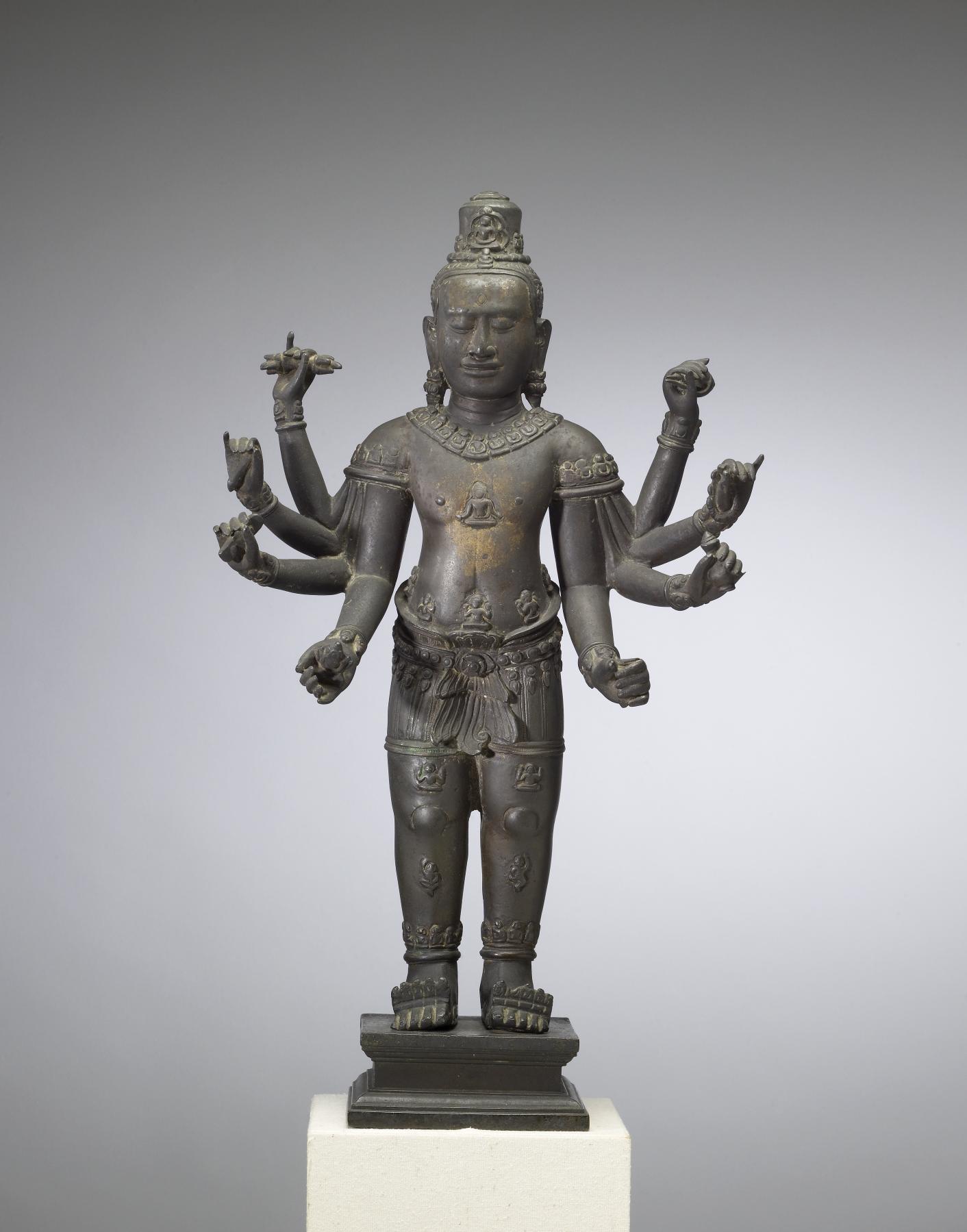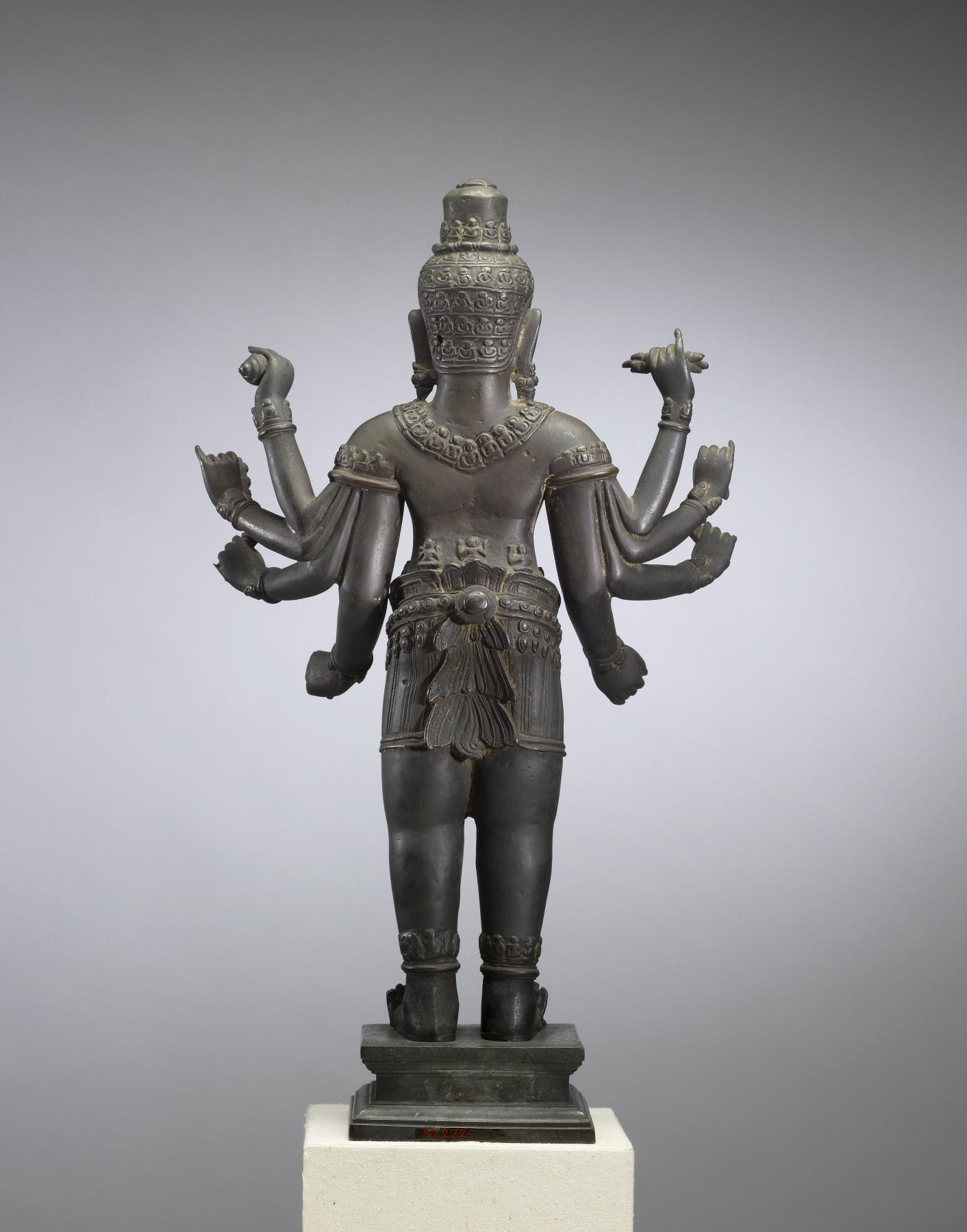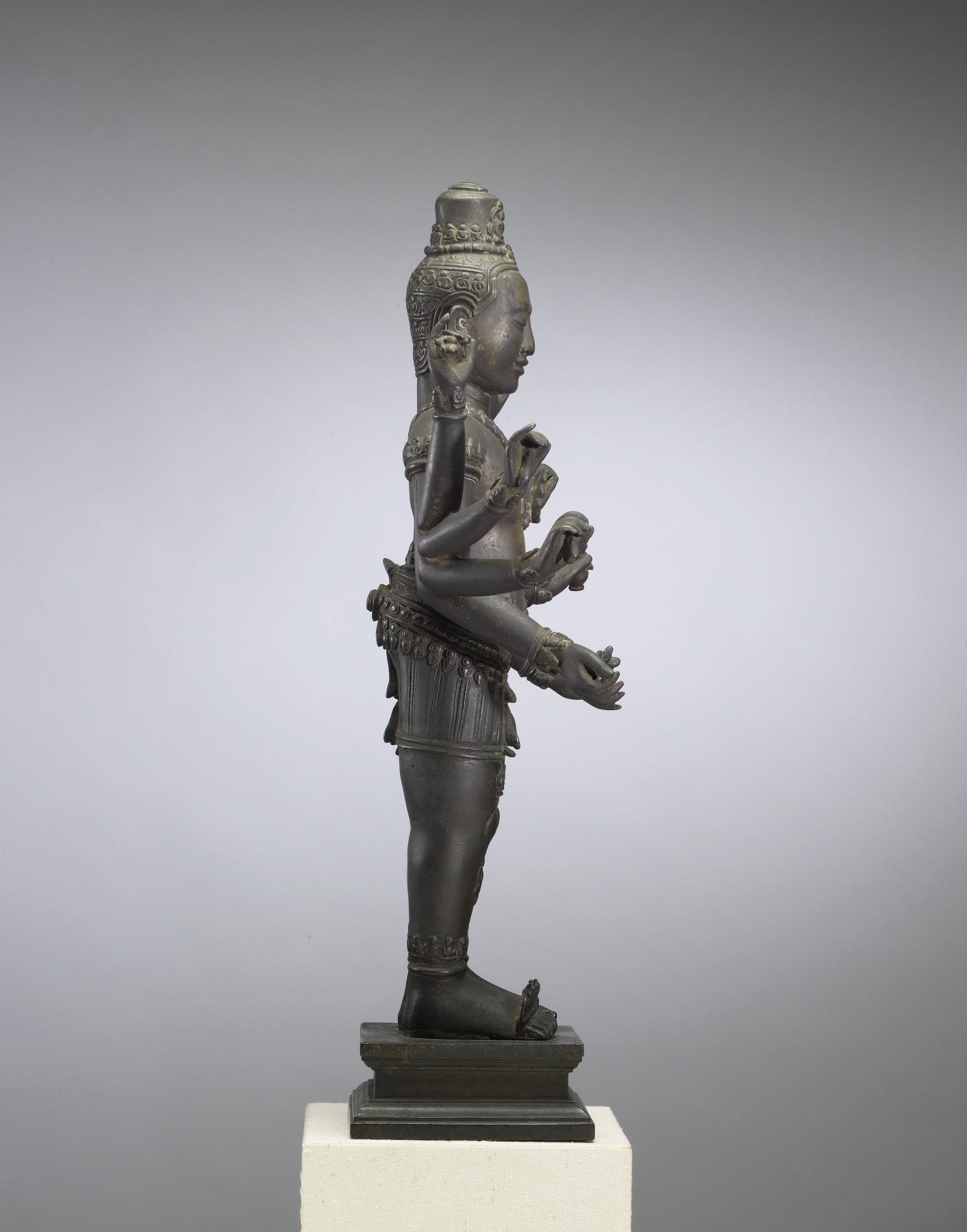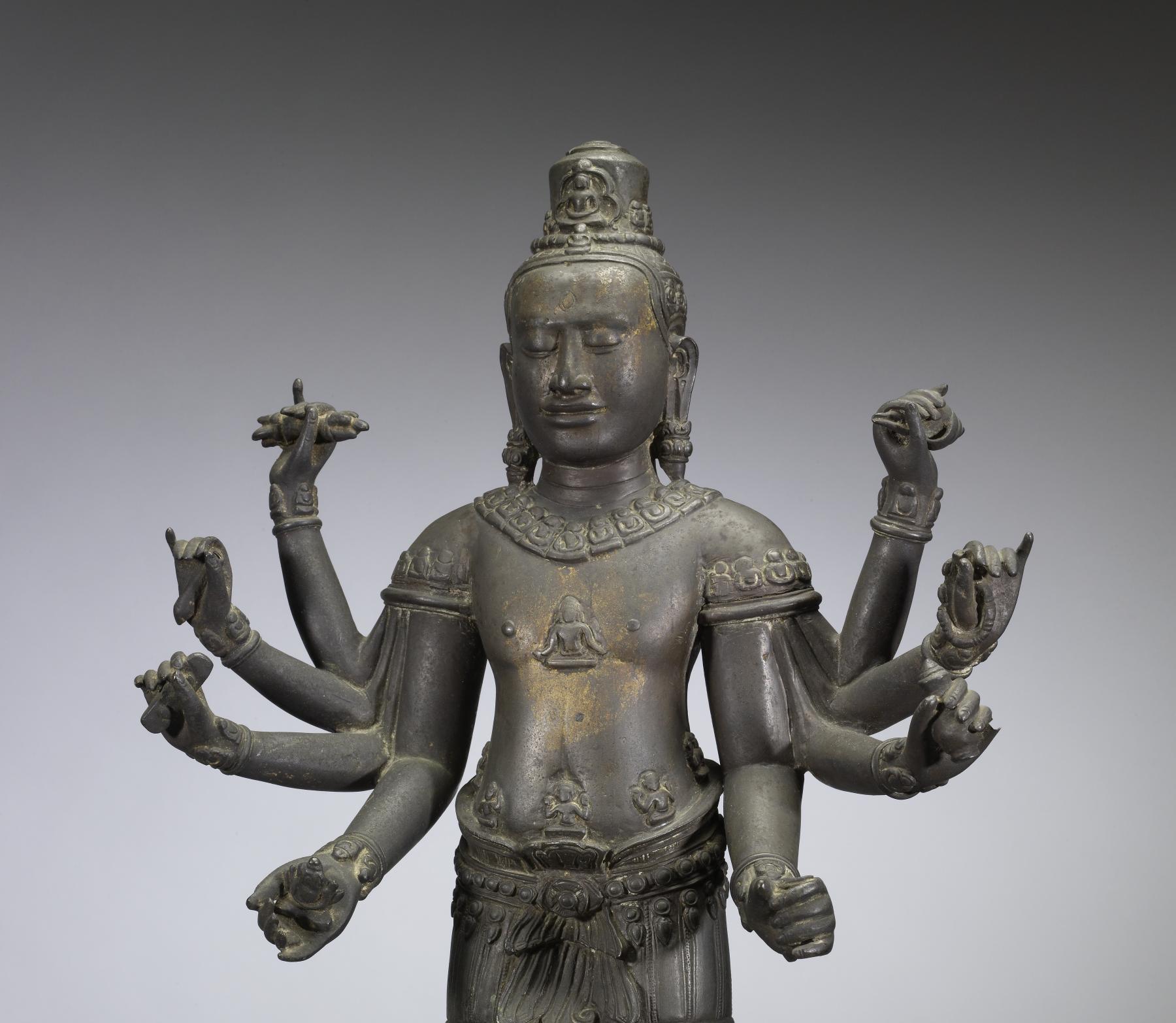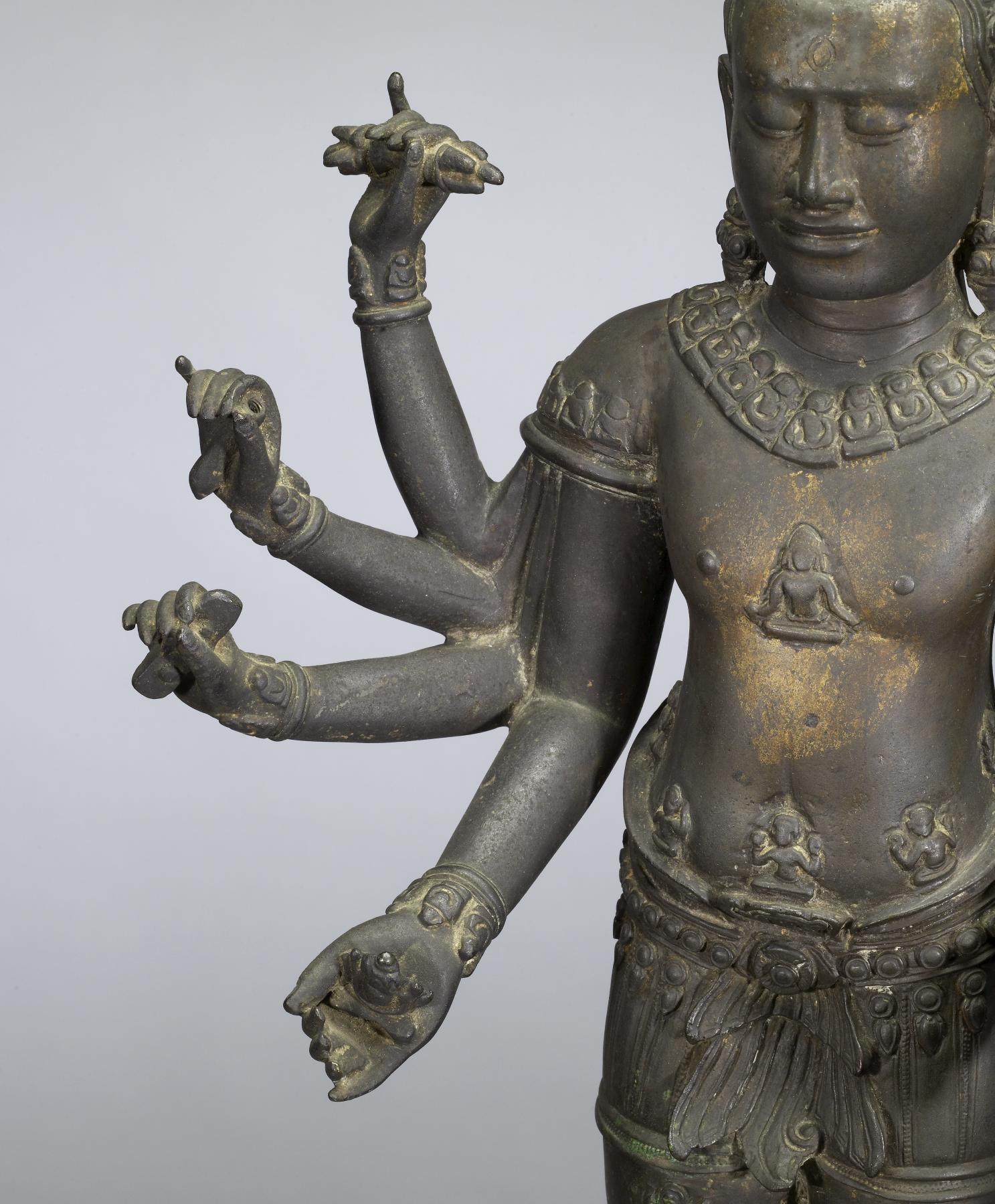Eight-Armed Avalokiteshvara
(Southeast Asia )
Avalokiteshvara is a bodhisattva, a divine being who is on the path to becoming a Buddha (“Awakened One”) and helps others on the path toward enlightenment. This multi-armed figure is hollow-cast from an alloy of copper and 5% tin, called bronze. Using computed tomography or CT scans, museum conservators determined that the head, arms, and body were cast in stages and joined using sophisticated metal casting techniques. Avalokiteshvara is covered with images of the Buddha, like the ones making up his necklace. Each of these small figures was originally carved or stamped in wax and applied to the model before being cast in bronze. Avalokiteshvara also wears arm and wristbands made of a different metal alloy: brass, which initially would have glistened like gold.
Provenance
Provenance (from the French provenir, 'to come from/forth') is the chronology of the ownership, custody, or location of a historical object. Learn more about provenance at the Walters.
Brahmanical Temple (Bot Phram), Bangkok; Alexander B. Griswold, Monkton, Maryland, July 1949 [1]; by bequest to Walters Art Museum, 1992.
[1] Presented to the Breezewood Foundation, December 1960, inv. no. 471
Exhibitions
| 1995 | Unearthly Elegance: Buddhist Art from the Griswold Collection. The Walters Art Gallery, Baltimore. |
Geographies
Cambodia, Angkor Wat
(Place of Origin)
Thailand, Bangkok (Place of Discovery)
Measurements
H with base: 21 1/16 × W: 12 3/16 × D: 6 in. (53.5 × 31 × 15.3 cm); Base only H: 1 15/16 × W: 5 5/16 × D: 5 5/16 in. (5 × 13.5 × 13.5 cm)
Credit Line
Bequest of A. B. Griswold, 1992
Accession Number
In libraries, galleries, museums, and archives, an accession number is a unique identifier assigned to each object in the collection.
In libraries, galleries, museums, and archives, an accession number is a unique identifier assigned to each object in the collection.
54.2726

